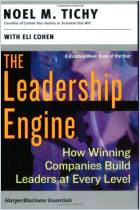Join getAbstract to access the summary!

Join getAbstract to access the summary!
Harrison Owen
The Spirit of Leadership
Liberating the Leader in Each of Us
Berrett-Koehler, 1999
What's inside?
The new age of leadership requires evoking the Spirit, believing that whatever happens is the only thing that could happen, and knowing the Dragon. If you are "new age" enough so that doesn't sound fuzzy to you, you're ready for business, the spirit way.
Recommendation
Harrison Owen suggests that there is a gap in leadership, because we are going through chaotic, transforming times, and traditional leaders can no longer be in control and protect us from it. However, instead of looking for leadership in the few or "the One," we should recognize that all individuals have the capacity for leadership and, through self-organizing activity, appropriate leadership will emerge for different tasks. He is especially impressed by the power of the informal organization to achieve results and for true leadership to emerge from the interaction of people in this informal milieu. He identifies leadership with the power of Spirit to inspire others. Five functions of leadership are the focus of the book: evoking Spirit with vision, growing Spirit with collective storytelling, sustaining Spirit with structure, comforting Spirit at the end, and reviving Spirit to move through a period of grief at endings and move on. The book is written as an essay or narrative, with observations, examples, and opinions about what could or should be. While Owen’s book reflects a trend in business to provide more meaning and purpose through spiritual underpinnings, some may find his discussion of "Spirit" somewhat fuzzy and hard to grasp. The language of the book is occasionally rambling and his claims don’t always seem totally convincing. However, the book presents the subject of leadership in a fascinating new light.
Summary
About the Author
Harrison Owen is president of H.H. Owen and Company and the author of six previous books including Open Space Technology: A User’s Guide. He has worked with a variety of organizations including the National Institute of Health, the Veterans Administration, urban community organizations in America and Africa, and the Peace Corps.





















Comment on this summary